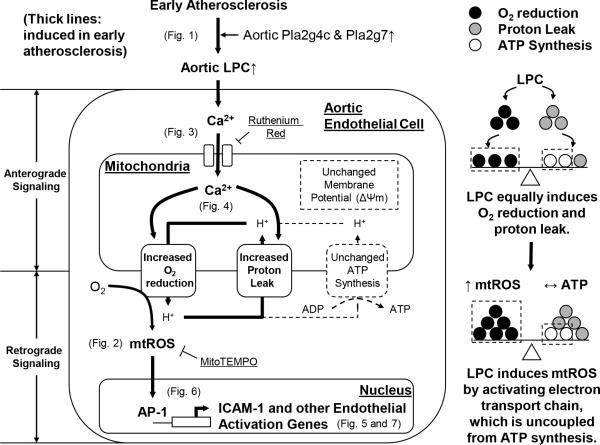Figure 8. A new working model.
Left, during early atherosclerosis, LPCs are induced in the aorta, presumably due to increased expression of Pla2g4c and Pla2g7. LPC then induces cytosolic Ca2+, which then enters into the mitochondria of aortic endothelial cells. LPC-induced mitochondrial Ca2+ then stimulates mitochondrial electron transport chain and proton leak without affecting ATP synthesis and mitochondrial membrane potential. As a result, mitochondrial reactive oxygen species (mtROS) are specifically induced without causing mitochondria injury. LPC-induced mtROS could then be released to the cytosol, where they regulate nuclear binding of AP-1 to the promoter of intercellular adhesion molecule-1 (ICAM-1) and other genes, contributing to endothelial activation. Anterograde signaling describes signal transduction from cytosol to mitochondria and retrograde signaling describes signal transduction from mitochondria to cytosol and nucleus. Right, LPC induces ATP-uncoupled, but proton leak-coupled mtROS. ICAM-1, intercellular adhesion molecule-1; mtROS, mitochondrial reactive oxygen species. ΔΨm, mitochondrial membrane potential.

